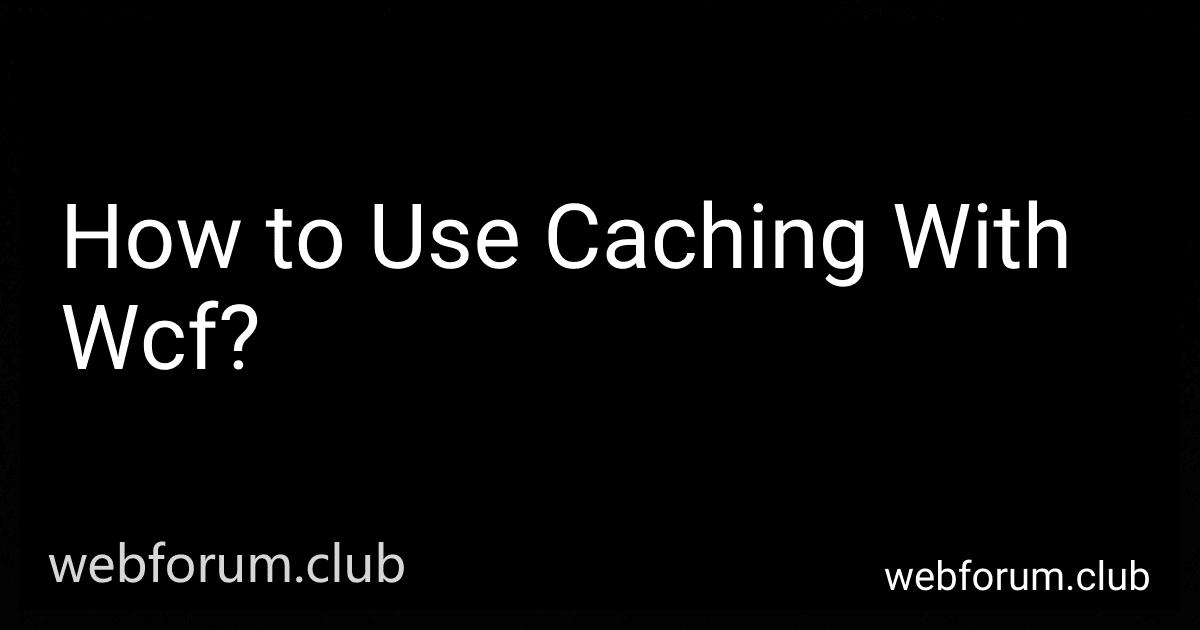Posts (page 7)
-
 5 min readExternal page caching in Drupal is a method of storing the rendered HTML output of a webpage on a separate server or system that is separate from the Drupal application itself. This can help improve the performance of a website by reducing the time it takes to load pages for users. By caching the HTML output externally, the server does not have to generate the page content from scratch every time a user requests it, leading to faster load times and improved scalability.
5 min readExternal page caching in Drupal is a method of storing the rendered HTML output of a webpage on a separate server or system that is separate from the Drupal application itself. This can help improve the performance of a website by reducing the time it takes to load pages for users. By caching the HTML output externally, the server does not have to generate the page content from scratch every time a user requests it, leading to faster load times and improved scalability.
-
 5 min readCaching with WSGI can be implemented by using a middleware component that sits between the application and the server. This middleware component can intercept requests and responses to cache data for faster retrieval in the future.One popular way to implement caching with WSGI is to use a library such as Flask-Caching or Django’s built-in caching framework. These libraries provide decorators and functions that can be used to cache the results of expensive operations or database queries.
5 min readCaching with WSGI can be implemented by using a middleware component that sits between the application and the server. This middleware component can intercept requests and responses to cache data for faster retrieval in the future.One popular way to implement caching with WSGI is to use a library such as Flask-Caching or Django’s built-in caching framework. These libraries provide decorators and functions that can be used to cache the results of expensive operations or database queries.
-
 7 min readCaching can be a helpful technique when working with Windows Communication Foundation (WCF) services to improve performance and reduce latency. There are several ways to implement caching with WCF.One common approach is to use the built-in output caching feature of ASP.NET, which caches the response of a WCF service method for a specified period of time. This can be done by applying the OutputCache attribute to the service method.
7 min readCaching can be a helpful technique when working with Windows Communication Foundation (WCF) services to improve performance and reduce latency. There are several ways to implement caching with WCF.One common approach is to use the built-in output caching feature of ASP.NET, which caches the response of a WCF service method for a specified period of time. This can be done by applying the OutputCache attribute to the service method.
-
 3 min readThe best solution for large caching in Ruby would be to use a combination of tools and techniques to optimize performance and storage. One popular option is to use a distributed caching system like Redis or Memcached, which can handle large amounts of data and provide fast access times.
3 min readThe best solution for large caching in Ruby would be to use a combination of tools and techniques to optimize performance and storage. One popular option is to use a distributed caching system like Redis or Memcached, which can handle large amounts of data and provide fast access times.
-
 4 min readTo disable ajax caching, you can set the AJAX request cache property to false in your JavaScript code. This will prevent the browser from caching the results of the AJAX request, ensuring that each request fetches new data from the server. Additionally, you can add a timestamp or a random parameter to the AJAX URL to trick the browser into treating each request as unique. Another method is to use the no-cache header in the server response to instruct the browser not to cache the AJAX response.
4 min readTo disable ajax caching, you can set the AJAX request cache property to false in your JavaScript code. This will prevent the browser from caching the results of the AJAX request, ensuring that each request fetches new data from the server. Additionally, you can add a timestamp or a random parameter to the AJAX URL to trick the browser into treating each request as unique. Another method is to use the no-cache header in the server response to instruct the browser not to cache the AJAX response.
-
 5 min readTo disable caching of a widget in WordPress, you can add the following code snippet to your theme's functions.php file:add_filter( 'widget_text', 'shortcode_unautop'); add_filter( 'widget_text', 'do_shortcode');This code will prevent WordPress from caching the widget content, ensuring that the widget's output is always dynamic and up-to-date.What is the best way to disable caching for widget areas in WordPress.
5 min readTo disable caching of a widget in WordPress, you can add the following code snippet to your theme's functions.php file:add_filter( 'widget_text', 'shortcode_unautop'); add_filter( 'widget_text', 'do_shortcode');This code will prevent WordPress from caching the widget content, ensuring that the widget's output is always dynamic and up-to-date.What is the best way to disable caching for widget areas in WordPress.
-
 8 min readCaching is a technique used to store frequently accessed data in a faster and more efficient manner. In C++, caching can be implemented using data structures like hash maps, sets, and lists to store the cached data.One common way to implement caching in C++ is to use a hash map to store the key-value pairs where the key represents the data being cached and the value represents the cached data itself. This allows for quick access to the cached data by looking up the key in the hash map.
8 min readCaching is a technique used to store frequently accessed data in a faster and more efficient manner. In C++, caching can be implemented using data structures like hash maps, sets, and lists to store the cached data.One common way to implement caching in C++ is to use a hash map to store the key-value pairs where the key represents the data being cached and the value represents the cached data itself. This allows for quick access to the cached data by looking up the key in the hash map.
-
 3 min readTo force caching in Chrome, you can use the following methods:Disable cache through developer tools: Right-click on your webpage, select "Inspect", go to the Network tab, and check the "Disable cache" box. This will force the browser to always load resources from the server.Use Chrome DevTools to clear cache: Go to the DevTools menu (F12 or Ctrl+Shift+I), go to the Application tab, click on "Clear storage", and then click on "Clear site data".
3 min readTo force caching in Chrome, you can use the following methods:Disable cache through developer tools: Right-click on your webpage, select "Inspect", go to the Network tab, and check the "Disable cache" box. This will force the browser to always load resources from the server.Use Chrome DevTools to clear cache: Go to the DevTools menu (F12 or Ctrl+Shift+I), go to the Application tab, click on "Clear storage", and then click on "Clear site data".
-
 3 min readTo prevent an HTML5 page from caching, you can add a meta tag in the head section of your HTML document with the following attributes: What is cache header in HTML5?In HTML5, a cache header is a directive that specifies how a web page or resource should be stored in the browser cache. This header is included in the HTTP response from the server and tells the browser how long it should retain a cached copy of the resource before checking for updates.
3 min readTo prevent an HTML5 page from caching, you can add a meta tag in the head section of your HTML document with the following attributes: What is cache header in HTML5?In HTML5, a cache header is a directive that specifies how a web page or resource should be stored in the browser cache. This header is included in the HTTP response from the server and tells the browser how long it should retain a cached copy of the resource before checking for updates.
-
 4 min readCaching in MongoDB can be implemented using various strategies such as in-memory caching, Redis caching, or application-level caching. In-memory caching involves storing frequently accessed data in memory to reduce the number of database queries. Redis caching can be used to store frequently accessed data in a separate Redis instance, which can help reduce the load on the MongoDB database.
4 min readCaching in MongoDB can be implemented using various strategies such as in-memory caching, Redis caching, or application-level caching. In-memory caching involves storing frequently accessed data in memory to reduce the number of database queries. Redis caching can be used to store frequently accessed data in a separate Redis instance, which can help reduce the load on the MongoDB database.
-
 4 min readTo disable MySQL query caching, you can do so by modifying the MySQL configuration file (my.cnf). Locate the section that enables query caching and set the values to 0 or comment out the lines. You can find the query_cache_type and query_cache_size parameters in the configuration file. Once you have made the changes, save the file and restart the MySQL service for the changes to take effect.
4 min readTo disable MySQL query caching, you can do so by modifying the MySQL configuration file (my.cnf). Locate the section that enables query caching and set the values to 0 or comment out the lines. You can find the query_cache_type and query_cache_size parameters in the configuration file. Once you have made the changes, save the file and restart the MySQL service for the changes to take effect.
-
 6 min readUnit testing a service that uses caching can be challenging, as caching introduces an extra layer of complexity to the testing process. One approach to unit testing a service that uses caching is to use mocking frameworks to simulate cache behavior.Mocking frameworks allow you to create fake cache objects that mimic the behavior of a real cache. This enables you to isolate the service being tested from the actual cache implementation, making it easier to test the service in isolation.
6 min readUnit testing a service that uses caching can be challenging, as caching introduces an extra layer of complexity to the testing process. One approach to unit testing a service that uses caching is to use mocking frameworks to simulate cache behavior.Mocking frameworks allow you to create fake cache objects that mimic the behavior of a real cache. This enables you to isolate the service being tested from the actual cache implementation, making it easier to test the service in isolation.